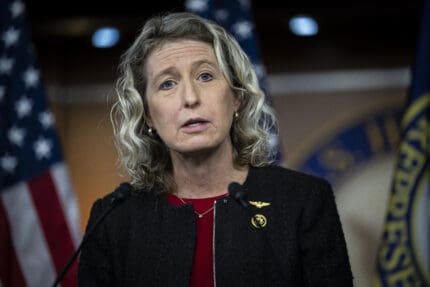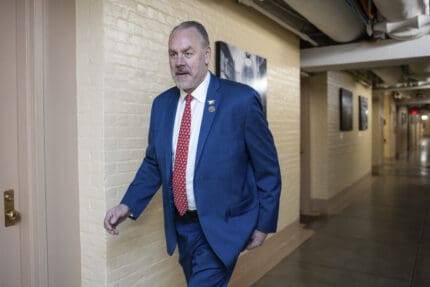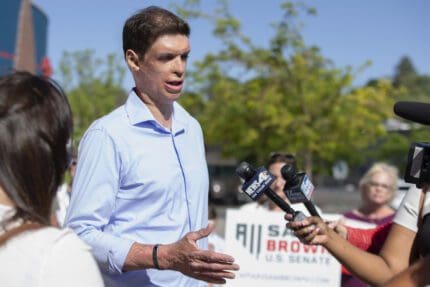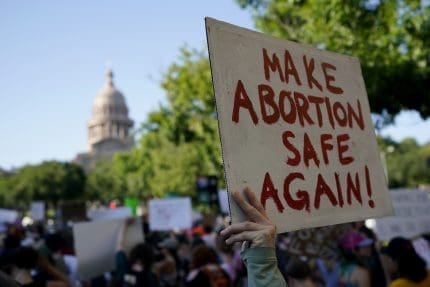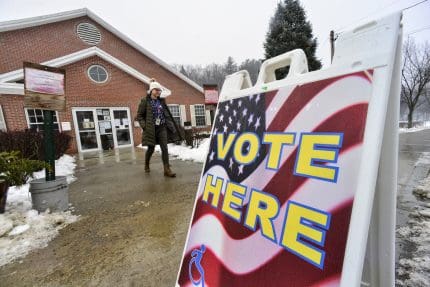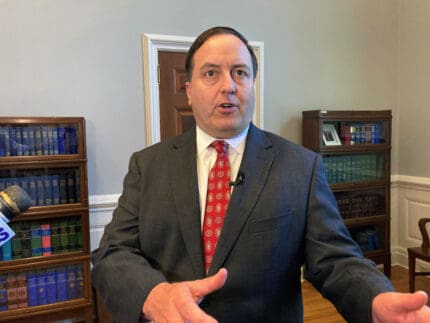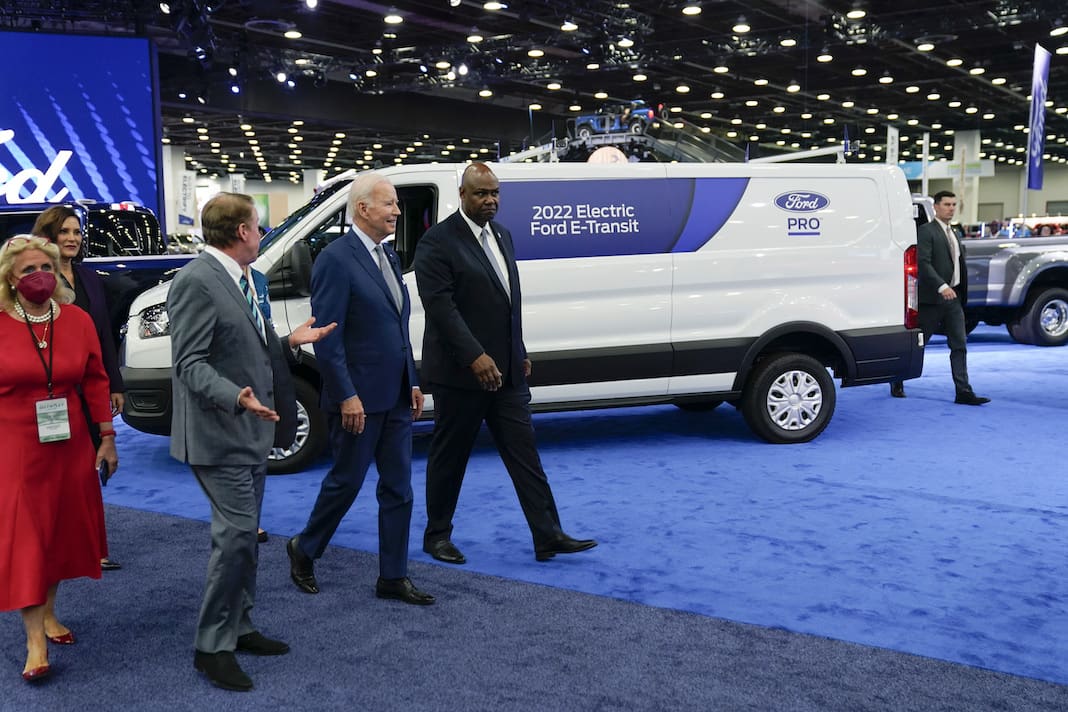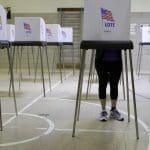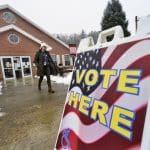Republicans distorted crime data to win elections. It didn't work.
Voters didn’t fall for the bogus narrative of unchecked violent crime and so-called ‘defunding’ of police under Democratic leadership.

In the months leading up to the midterm elections in November, Republican campaigns nationwide made claims of rampant crime in cities and states run by Democrats one of their central messages.
GOP candidates inaccurately repeated the false claim in advertisements and on the campaign trail that crime is up because of progressive prosecutors and the Democratic party’s support for the “Defund the Police” movement, using distorted statistics on crime. The tactic largely didn’t pay off: GOP candidates peddling crime rhetoric underperformed in the midterm elections, losing races they were predicted to win and taking full control of Congress.
In New York, failed Republican gubernatorial candidate Lee Zeldin spent much of his campaign blaming Democrats across the state for a spike in shootings and violent crime.
“There is rising crime on our streets and in our subways, and people who are in charge right now in Albany actually feel like they haven’t passed enough pro-criminal laws,” Zeldin said in the weeks before the election, according to the Associated Press.
Zeldin wasn’t the only one: Top GOP candidates in battleground states such as Pennsylvania, Wisconsin, and Michigan used similar attacks, blaming their Democratic opponents for increases in crime.
“We’re done with Whitmer’s violent crime wave in the state of Michigan,” said Tudor Dixon, the GOP gubernatorial candidate in that state, at a campaign rally with former President Donald Trump in September.
And peddling the crime narrative was expensive: Between September and the election, Republicans spent nearly $50 million on TV ads across the country focusing on crime that presented a distorted, grim perception of cities as wastelands of violent crime, according to The Guardian.
“Sanctuary cities, weak prosecutors, crime skyrocketing. Failed liberal policies are making us less safe,” said an August National Republican Senatorial Committee TV ad supporting Mehmet Oz, the GOP Senate candidate in Pennsylvania. “Crazy, dangerous ideas are hurting our communities. We need a change.”
Republicans misled the public about crime
If the violent, harsh portrait of a dystopian America that candidates like Zeldin, Dixon, and Oz described had been accurate, then the election results might have turned out differently. But the attacks by Republican candidates were based on a misrepresentation and distortion of incomplete crime data that doesn’t paint a complete picture of the situation.
While the violent crime rate increased in most urban areas between 2021 and 2022, a survey conducted by the Major Cities Chiefs Association, a coalition of police executives representing some of the largest cities in the country, shows that the number of homicides slightly fell in that same period, meaning there were fewer killings but more robberies and aggravated assault cases.
A study conducted by Third Way, a center-left think tank, found that red states actually have murder rates equal to or higher than those of blue cities.
The Republican attack ads omit a recent major factor in determining crime statistics: Significant changes in the way that local police departments report their annual crime statistics.
Much of the data that Republicans cite comes from the FBI’s annual “Crime in the Nation” report, which did show a rise in homicides in 2021. But the FBI switched to a new crime data-reporting system at the beginning of 2021 that drastically changed how local police departments report their data. The new system requires police departments to include new details for reported crimes in their data collection. As a result, the figures in the 2021 report are incomplete: Only 63% of the nation’s police departments submitted data to the FBI — and even then, much of the data submitted was patchy, with some departments not submitting all the data that they were asked to.
The 2021 report, for example, doesn’t include full reporting data from some of the country’s biggest police departments, including those in New York City, Los Angeles, and San Francisco.
Ahead of the report’s release, the Center for Just Reporting, a nonprofit that promotes better journalistic standards for the public understanding of safety, released a guide for reporters covering crime and criminal justice that explains how the changes in the new reporting system would result in an incomplete picture of crime in the U.S.
“Some of these differences could drive further confusion and misperceptions about crime trends,” wrote Laura Bennett, the center’s director and the author of the report.
For example, in the previous reporting system, only the most severe crime in a single incident would be reported to the FBI even if the perpetrator committed multiple crimes. Under the new system, all crimes that occur in a single incident — such as if a suspect assaults a victim and then steals their vehicle — must be reported.
None of this stopped Republican campaigns from cherry-picking data for their attack ads. In New York, for example, Zeldin’s campaign put out a graphic ad that shows footage of shootings and violent assaults captured on security camera while a voice-over says: “You are looking at actual violent crimes caught on camera in Kathy Hochul’s New York. And it’s getting much worse.”
Many clips in the ad were from before Democratic New York Gov. Kathy Hochul took office. And one clip depicted a crime that happened in California, not in New York.
The actual crime statistics in New York City paint a much different picture than the one Zeldin’s campaign pushed. According to the New York Police Department, the number of shootings and homicides decreased by more than 30% in October 2022 compared to October 2021.
Defunding the police never happened
Elsewhere, a number of GOP candidates attempted to falsely tie their opponents to the “Defund the Police” movement — the push to reallocate funds from police departments to other public safety and social services, such as housing, education, and mental health services.
But despite the popularity of “Defund the Police” as a slogan in 2020 and 2021 in the aftermath of the police killings of George Floyd and Breonna Taylor, police funding actually increased in many major cities over the past few years, according to a report from ABC News, and defunding the police has not been embraced by most Democratic party politicians.
In his March State of the Union address, President Joe Biden even emphasized his administration’s position on the matter: “We should all agree the answer is not to defund the police, it’s to fund the police,” he said. “Fund them with resources and training. Resources and training they need to protect their communities. I ask Democrats and Republicans alike to pass my budget and keep our neighborhoods safe.”
And in a press conference in May, Biden once again urged states to use federal funds to invest in hiring more police.
There’s been no evidence that the recent elections of progressive prosecutors such as former District Attorney Chesa Boudin in San Francisco and Philadelphia DA Larry Krasner in Philadelphia are to blame for a rise in violent crime in the cities they serve. But that didn’t stop voters from recalling Boudin, even though crime didn’t drastically escalate in San Francisco, as Boudin’s critics and local media said it did.
Krasner is facing a similar recall effort in Philadelphia, once again fueled by what Mother Jones called distortions of crime data and cherry-picking of statistics by Republican lawmakers to make a case that misrepresents reality.
Crime as an issue doesn’t resonate with voters
Despite the heavy attacks from the GOP on Democratic criminal justice policies, exit polls from the midterms showed that crime wasn’t a huge motivating factor for voters.
Exit polls conducted by CNN and Edison Research in 11 states found that inflation and abortion were the two biggest motivating factors for voters. Another exit poll, conducted by NBC News and the National Election Pool by interviewers in all 50 states, found that crime mattered as a top issue to only 11% of voters.
Democratic polling firm Impact Research recently released data culled from a survey of 1,000 midterm voters across 71 of the most competitive House districts that found threats to democracy as the main reasons for the Democrats’ better-than-expected performance in the midterm elections.
While a majority of respondents said “protecting democracy” and inflation were chief reasons for voting this year, only 45% said crime and public safety were a motivating factor for voting, meaning that the supposed violent crime wave Republicans campaigned on may not have resonated with voters as much as they hoped it would.
Vera Action, the lobbying arm of the research and policy nonprofit Vera Institute of Justice, commissioned a public opinion research firm to conduct a post-election exit survey of 1,505 voters from a variety of political backgrounds. The survey sought to better understand the role of politicization of crime and safety in the midterm elections, and the results of the survey were consistent with other polls that found that crime wasn’t a top issue among voters. According to Vera Action’s survey, three out of five respondents said that the candidate campaigns that focused on crime “did not affect their awareness of crime as an issue.”
“This midterm election season, voters didn’t buy the empty, tough-on-crime claims that promise safety but fail to deliver,” Nick Turner, Vera Institute of Justice’s president and director, told the American Independent Foundation. “Voters know what makes communities safer — and it’s not more arrests, jails and prisons.”
Published with permission of The American Independent Foundation.
Recommended

Ohio Gov. DeWine said he didn’t know of millions in FirstEnergy support. Is it plausible?
Ohio Gov. Mike DeWine’s claim to not know about the millions an Akron utility spent supporting his 2018 campaign for governor simply isn’t credible, an Ohio political scientist said in a recent interview. A spokesperson for DeWine pushed back. FirstEnergy provided that support, then spent more than $60 million to pass and protect a $1.3 billion ratepayer-financed […]
By Marty Schladen, Ohio Capital Journal - April 29, 2024
Missouri governor hopeful Bill Eigel rejects affordable childcare proposal
Eigel has previously supported stripping funds from public schools and once opposed an expansion of early kindergarten.
By Jesse Valentine - April 15, 2024
Montana Gov. Greg Gianforte hosts event with religious extremist
J.P. De Gance is the founder of Communio, an organization that uses social media marketing tools to push a far-right agenda.
By Jesse Valentine - March 27, 2024















